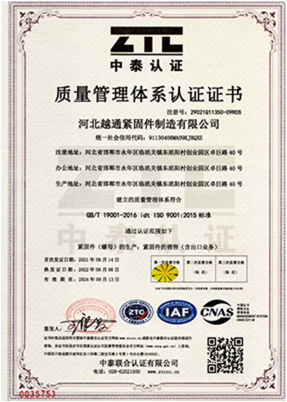ag. . 21, 2024 14:53 Back to list
Innovative Beam Clamp Solutions for Secure Bonding and Enhanced Structural Integrity
Understanding Bonding Beam Clamps An Essential Component in Electrical and Structural Engineering
Bonding beam clamps are vital components in electrical and structural applications, ensuring conductivity and stability in various installations. These clamps are designed to connect bonding beams—elements that enhance the electrical connection between different parts of a structure, such as metal frameworks, conduits, or roofs. This article delves into the importance, functionality, and applications of bonding beam clamps, highlighting their role in contemporary engineering practices.
What are Bonding Beam Clamps?
Bonding beam clamps are specially engineered fasteners used to secure and connect bonding beams to structural elements. Typically made from conductive materials like copper or aluminum, these clamps guarantee minimal resistance at the connection points, ensuring that electrical current can flow freely. Their design often incorporates features such as adjustable widths and integration with various attachment methods to accommodate diverse structural configurations.
Importance in Electrical Safety
In electrical systems, the importance of effective grounding cannot be overstated. Bonding beam clamps play a pivotal role in grounding systems, which are fundamental to protecting both equipment and personnel. By ensuring that all metal components are electrically connected, these clamps prevent the buildup of static electricity and reduce the risk of electrical shock. The National Electrical Code (NEC) and various engineering standards emphasize the necessity of robust bonding practices—highlighting clamps as essential tools in achieving compliance and safety.
Applications in Structural Engineering
bonding beam clamp

Beyond electrical safety, bonding beam clamps are also critical in structural applications. In construction, they are often employed to attach bonding beams to steel frameworks, creating a unified structure that can distribute loads effectively. This enhances the overall stability of the building, particularly in high-rise developments where wind loads and seismic activity must be considered. Additionally, these clamps are used in prefab structures where speedy assembly and solid connections are vital.
Features to Consider
When selecting bonding beam clamps, several factors should be considered to ensure optimal performance. First, the material of the clamp must be compatible with that of the bonding beam and the connecting surfaces. Corrosion resistance is another critical property, especially in outdoor or industrial environments where moisture and chemicals can accelerate degradation. The clamp's design should also allow for easy installation and adjustment, facilitating timely integration during construction or maintenance operations.
Installation Best Practices
Proper installation of bonding beam clamps is essential to achieve their maximum potential. It is crucial to follow manufacturer guidelines and relevant engineering standards during the installation process. This includes ensuring that the connection surfaces are clean and free from contaminants that could hinder conductivity. The clamps should be tightened to the specified torque to avoid loosening over time, which could jeopardize the integrity of the bond.
Conclusion
Bonding beam clamps are indispensable components in both electrical and structural engineering. They ensure safety, functionality, and reliability in various applications, from residential buildings to industrial facilities. By facilitating effective bonding and grounding, they contribute to the longevity and stability of structures, safeguarding both people and property. As technologies evolve and the demand for safe and efficient engineering solutions increases, the role of bonding beam clamps will undoubtedly remain critical in the engineering landscape. Given their importance, industry professionals must stay informed about best practices and innovations related to these essential components.
-
The Ubiquitous Reach of DIN934 in Application Realms
NewsMay.16,2025
-
Exploring Different Bolt Types
NewsMay.16,2025
-
Cracking the Code of Sleeve Anchor Mastery
NewsMay.16,2025
-
Clamp Design Principles,Types and Innovations
NewsMay.16,2025
-
Artistry Inspired by the Humble Anchor Bolt
NewsMay.16,2025
-
A Deep Dive into Screw Types
NewsMay.16,2025


